Australian Rugby League’s Greatest Halfbacks
Arguably no jersey in rugby league carries more prestige or responsibility than the No.7.
The ‘greatest halfback ever’ discussion remains one of the fiercest hypothetical debates in the game, and the fact pioneering icons Arthur ‘Pony’ Halloway and Chris McKivat, post-war legends Barry Muir and Arthur Summons, and modern greats Steve Mortimer, Geoff Toovey, and Brett Kimmorley could be left out of our top 10 only emphasises the incredible array of talent to have played the position.
10. Tom Raudonikis
The dominant halfback of the 1970s, Tom Raudonikis played with the ferocity of a front-row firebrand. A veteran of 29
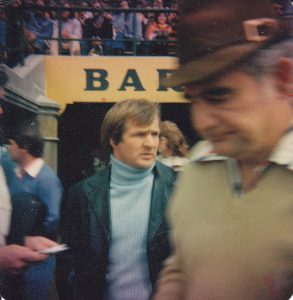
Legendary Magpies halfback Tommy Raudonikis at the SCG in the ’70s
Tests for Australia – the most in the No.7 jumper behind only fellow Western Suburbs legend Keith Holman – and two Kangaroo Tours (1973 and 1978), Raudonikis typified the rough-and-tumble Magpies spirit of the 1970s, racking up a record 201 games for the club.
The terrier-like Raudonikis was hell-bent on playing over the top of his opposing No. 7 every time he took the field – regularly employing roughhouse tactics to get the job done (he was sent off during the 1978 Ashes series). He drew criticism and a fine from the NSWRL after revealing himself as the ‘Phantom Biter,’ taking a chunk out of rival Manly half John Gibbs in a 1976 clash, but remained one of the competition’s finest competitors and captained Newtown to a gallant 20-11 loss to Parramatta in the 1981 Grand Final after reluctantly leaving his beloved Wests.
A unique and much-loved rugby league character, Raudonikis imparted his old-world wisdom during a long and eventful coaching career which included stints with Ipswich, Wests and the NSW Origin side.
9. Billy Smith
A centre in St George’s 1963-65 Grand Final wins, Billy Smith rates as one of the all-time great halfbacks, and wore the No.7 in the last of the Dragons’ 11 straight premierships in ’66. A rugged, tenacious linchpin and an attacking livewire, Smith played 26 Tests for Australia – all at halfback – from 1964-70 and toured twice with the Kangaroos.
Smith played in the Saints’ 1971 and ’75 Grand Final losses but was dropped to reserve grade in ’77 as the club surged to their first premiership in 11 years. His 234 first grade games was second only to Norm Provan, while he played a record 296 games in all grades for the famous club.
A flamboyant and tempestuous customer on and off the field, Smith refused to back down from any opponent, and was a courageous defender to complement his vast array of attacking talents. Smith finished just outside the top 50 in Rugby League Week’s 1992 poll of the greatest 100 players of all time, and The Daily Telegraph’s list in 2000.
Read More: The Dragons’ All-Time Greatest XIII
8. Ricky Stuart
Largely overlooked in the pantheon of Australia’s greatest halfbacks, Canberra linchpin Ricky Stuart was a notable omission from the ARL’s 100 Greatest Players in 2008. But the tenacious, scheming No.7 rivalled Allan Langer and Raiders teammate Laurie Daley as the most influential player in the first half of the 1990s.
Stuart’s radar-like long and short kicking game, sleight of hand and pinpoint passing ability had few peers during his prime. The former Wallaby was integral to Canberra’s maiden title success in 1989, finished second in the Dally Ms and won the Clive Churchill Medal after the club’s 1990 Grand Final victory. He was at the absolute peak of his powers during the Raiders’ resounding 1994 premiership charge, steering one of rugby league’s greatest backlines. Stuart collected the rare Rothmans Medal-Dally M Medal double in 1993, but the Raiders’ title bid fell to pieces after their key playmaker broke his ankle in the penultimate round.
Langer kept him out of the Test line-up for the most part and ensured he never played an international on home soil, but Stuart’s legacy to the Australian jersey is as an Ashes hero on consecutive Kangaroo Tours. Stuart replaced Langer after first Test losses to Great Britain in 1990 and 1994, steering Australia to series victories on each tour – most famously by setting up an injury-time try for Mal Meninga in the 14-10 second Test victory at Old Trafford in 1990. Stuart thrived in the Origin arena, playing opposite Langer in all 14 of his NSW appearances and spearheading four Blues series triumphs in five years from 1990-94.
Read More: Rugby League’s Greatest Halves Combinations
7. Keith Holman
Dubbo product Keith Holman was twice turned away by South Sydney as a junior on account of being too small, but found a home with Western Suburbs, becoming the club’s greatest player and one of Australia’s most distinguished halfbacks. The Victorian-born No.7 made his debut for Australia in the drought-breaking

Keith Holman was the dominant halfback of the 1950s
Ashes series victory in 1950 and toured with the 1952-53 and 1956-57 Kangaroos.
‘Yappy’ played a then-record 14 Ashes Tests, while his total of 32 Tests for Australia was second only to Clive Churchill at the time. He missed the Magpies’ 1952 Grand Final victory while he was away with the Kangaroos, but he formed a magnificent partnership with five-eighth Frank Stanmore at club and representative level, and his mark of 200 first grade games for the club was bettered only by fellow Test halfback Tom Raudonikis.
Holman played in Grand Final losses to St George in 1956 and 1961 – the last match of his career. His insatiable passion for Rugby League was legendary, while he took halfback play in a new direction with his tenacious and aggressive defence to complement the traditional attacking role. Holman was named E.E. Christensen’s NSW Player of the Year in 1951, 1956 and 1958, while he won a record four Sun-Herald Best and Fairest awards (1950-51, 1956 and 1958).
6. Cooper Cronk
Being surrounded by likely future Immortals Thurston, Smith, Lockyer and Inglis in the Queensland Origin team has arguably held Melbourne linchpin Cooper Cronk back in the all-time greats debate, but he will be remembered as a giant of modern rugby league.
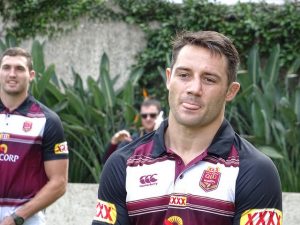
Storm halfback Cooper Cronk is the ultimate competitor
Converted into a halfback by Craig Bellamy in 2006, the former utility’s meticulous preparation and dedication –
rather than out-and-out natural talent – has seen him become achieve as much as any halfback to have played the game. Cronk has won a record five Dally M Halfback of the Year gongs, along with two Dally M Medal triumphs and the Golden Boot, to go with his 2012 Clive Churchill Medal success (and he should have won in 2009, too).
Cronk’s metronomic kicking game, precision passing and direction makes him the perfect playmaker to roll out the Storm’s relentless game-plan, but he is also capable of busting a game wide open with his underrated running game. Incredibly durable, Cronk has played at least 19 games in the past 12 NRL seasons to reach the 300-mark late in 2016, and has notched 32 Tests and 19 Origins despite the plethora of talent Australia and Queensland have had in the halves during his career.
The Maroons’ struggles when he was absent for part of the 2014 and ’15 series underlines Cronk’s massive influence.
Fantasy Match: Melbourne Storm (2007) vs Wigan Warriors (1990/91)
5. Duncan Thompson
Duncan Thompson was ranked 10th when a panel of experts convened to pick the 100 greatest players of all time for Rugby League Week in 1992 – the highest-placing halfback. Doubtlessly, he was the finest exponent of the position in the pre-World War II era. Thompson first represented Queensland from Ipswich in 1915, before spending the following season with North Sydney, and was shot in the lung while in France serving in World War I.
Despite the injury, he debuted for Australia in 1919 and rejoined North Sydney in 1920. Fast, nimble and a brilliant creator of play, Thompson was the linchpin of Norths’ phenomenal dual premiership-winning combination of 1921-22, captaining the side in the latter season. He starred on the 1921-22 Kangaroo Tour, but his Sydney career ended abruptly when he was sent off and suspended for kicking an opponent (a charge the cleanskin vehemently denied).
Thompson vowed never to play in the Sydney premiership again and returned to his native Queensland. Adding another glorious chapter to his career, Thompson was a catalyst for Queensland’s continued domination of NSW in the 1924-25 interstate series and for the all-conquering performances of the Toowoomba representative side, the famed ‘Galloping Clydesdales’. The ‘Downs Fox’ was an attacking genius and one of Australian Rugby League’s most influential players.
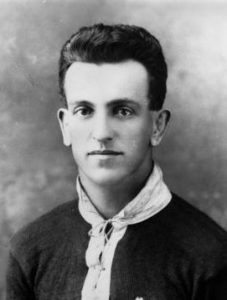
Duncan Thompson was the greatest pre-war rugby league playmaker
4. Peter Sterling
Parramatta halfback Peter Sterling blossomed under the tutelage of Jack Gibson after the master coach’s arrival at the club in 1981, developing into one of Australia’s greatest halfbacks – a superb organiser, a peerless playmaker with finely tuned passing and kicking skills, and a supreme competitor. Among a galaxy of stars at the Eels, ‘Sterlo’ was the key to the club’s premiership successes of 1981-83 and 1986.
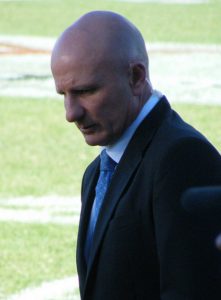
Eels legend Peter Sterling was one of rugby league’s greatest tacticians
Sterling tormented Great Britain on the unbeaten 1982 and 1986 Kangaroo Tours (the latter as vice-captain) and featured in home Ashes series triumphs in 1984 and 1988, frequently thwarting the Test aspirations of hi
s great rival, the brilliant Canterbury No.7 Steve Mortimer. Born in Toowoomba but a Wagga junior, Sterling played 13 matches for NSW in the Origin cauldron, starring in the 1986 series whitewash and captaining the Blues in a narrow series loss in 1987.
The plethora of individual awards Sterling collected are indicative of his consistency and class – two Rothmans Medals (1987 and 1990), two Dally M Medals (1986-87) and three Rugby League Week Player of the Year awards (1984 and 1986-87), while he was named the inaugural Clive Churchill medallist after Parramatta’s epic 4-2 win in the 1986 Grand Final. A recurring shoulder injury hampered the latter part of his career and forced his premature retirement early in 1992, by which stage his status as one of the game’s legends was assured – Sterling placed 11th in Rugby League Week’s top 100 players of all time later that year, and 14th in a similar poll run by the Daily Telegraph in 2000.
Fantasy Match: Parramatta Eels (1982) vs. Eastern Suburbs Roosters (1975)
3. Allan Langer
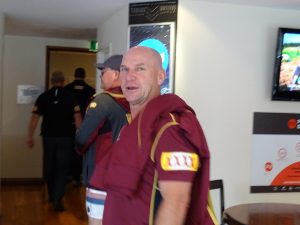
Queensland halfback Allan Langer dominated at the highest level for 15 years
Allan Langer can lay claim to being the No.1 player of the 1990s. The diminutive Brisbane halfback was capable of turning a match by himself – and did so with phenomenal regularity. ‘Alfie’ was the undisputed linchpin as captain of the Broncos’ 1992-93 and 1997-98 premiership successes, winning the Rothmans Medal and the Clive Churchill Medal in the club’s maiden title-winning season. He won the Dally M Medal in 1996, finished third in 1988 and 1994, and was named Dally M Players’ Player in 1991 and ’92, while collecting five Broncos player of the year gongs.
Impossible to contain, Langer’s tricky footwork, fantastic all-round kicking game and brilliant playmaking instincts marked him as the most dangerous attacking player of the decade. He is the only player in premiership history to score 100 tries at halfback. Being displaced by his great rival Ricky Stuart on consecutive Kangaroo Tours (1990 and 1994) after first Test losses to Great Britain were glaring and rare disappointments in a charmed career, but he bounced back on each occasion to re-establish himself as the game’s best No.7, and captained Australia to victory over New Zealand in 1998. Langer’s deeds in a then-record 34 matches for the Maroons place him in the top bracket of players in Origin history, while he was named at halfback in Queensland’s Team of the Century.
He is the most influential and best halfback I have seen in my time… if I had to pick a team and I needed a halfback, Alfie would be the player I would pick.
– Ben Walker
Fantasy Match: Brisbane Broncos (1992) vs Canterbury Bulldogs (2004)
2. Andrew Johns
Newcastle halfback Andrew Johns is the most complete player in Australian Rugby League history – a supreme match-winner. His prodigious talent was apparent from the moment he cemented the Knights’ No.7 jumper in 1994, accelerating toward representative honours and spearheading a euphoric maiden premiership for the club in 1997. Johns’ form in the late-1990s prompted calls that he may be the best halfback the game had seen; that accolade was almost a fait accompli a few short years later, and debate shifted to whether he was the best player of all time. ‘Joey’ won a record three Dally M Medals, two Golden Boot awards and collected the Clive Churchill Medal in captaining Newcastle to the title in 2001.
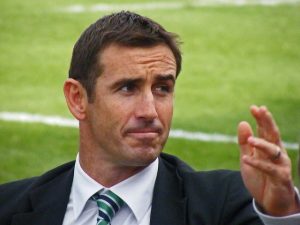
Knights halfback Andrew Johns was one of the best rugby league players of all time
Johns is regarded as arguably New South Wales’ greatest Origin player; he was inspirational as captain in the 2002-03 series, while his performances in 2005 rank among the finest individual displays the game has witnessed. He was typically brilliant at Test level during a period when Australia was particularly dominant. Johns’ masterful passing and kicking game, robust and determined running game, brilliant goalkicking and superb defensive capabilities were honed by incredible dedication and a fierce competitive streak.
Revelations in 2007 that Johns had been battled drug and alcohol problems and bipolar disorder throughout his career were condemned in some quarters, but in many respects they made his list of achievements all the more remarkable – a tortured genius of sorts. Johns was named at halfback in the ARL Team of the Century in 2008, setting a new benchmark for all No.7s to aspire to.
1. Johnathan Thurston
‘Thurston or Johns’ has been one of rugby league’s great barstool debates of recent years, but JT may just have inched his way in front after steering the North Queensland Cowboys to a maiden premiership in 2015 on the back of his record-breaking fourth Dally M Medal success.
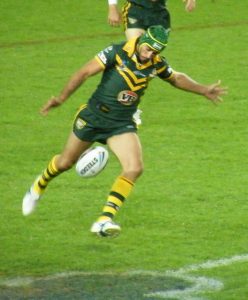
Champion halfback Johnathan Thurston has done everything in rugby league
Like Johns, Thurston’s brilliance and incredible all-round skill-set are matched only by his competitive streak and tenacity. A bright talent who won a grand final as a Bulldogs interchange player in 2004, Thurston has virtually carried the Cowboys franchise on his back for the past 12 seasons, setting new standards for consistency and excellence.
The Brisbane-born playmaker has a peerless passing and kicking game, and can unlock defences with his guile and footwork. His ability to produce the big play in clutch moments at club and representative levels will be marvelled at for as long as the game is played.
What sets Thurston apart is his durability. He has played at least 17 first-grade games every season since joining the Cowboys, has racked up 37 Test appearances, and has played 36 consecutive Origin games (and counting) since his debut – a mark unlikely ever to be challenged. On top of that, he is top point-scorer in Origin and Test history, and will finish his NRL career near the 2,500 points, 100 tries and 350 games marks.
His golden point field goal and Clive Churchill Medal win in 2015 may have been the crowning glory of Thurston’s career, but his status as the greatest of all time was arguably already sealed before that magical night.
In my opinion, Thurston is better than ‘Joey’. ‘JT’ will be an Immortal of the game.
– Matthew Johns


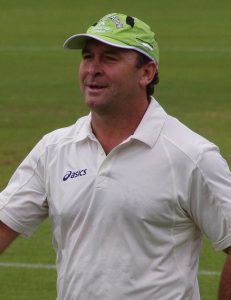










JT has the mantle now! Stuart and Sterling should be higher
Where would you have them ranked, Clive?
Stuart should not be there
Saw most of these guys…. Johns the best by a mile!!
Cameron Big call. Who do you have second?
I guess JT is actually pretty close, but Joey is still the man
Can’t split jt and joey then snorkie
Andrew Johns was best! His defence is what gets him home over JT!
Nowhere near as consistent as JT though
State of Origin News – JT only looks superior because he has Cam Smith Cooper Cronk GI Billy Slater and others in the side!
As opposed to Buderus, Fittler and Daley!!
State of Origin News – NSW were not in the same league! JT doesn’t pull his weight in defence, unlike what Joey did!
Stuart better than langer….johns and jt very close but i think even as a devout blues boy that jt is just in front of all
John Stewart Where does Sterling fit in for you?
Sterlo is probably up there with langer for me, langer had a better short kicking game but sterlo the better brain.
Joey v qld is the greatest single performance in the history of the game
Sterling had the sweetest defence
They’re all different players and all have their own strengths and weaknesses. Can you look at them objectively? I think JT has just about overtaken joey now. In 3rd place for me would be sterlo who was head and shoulders above the other 7s in the 80s.